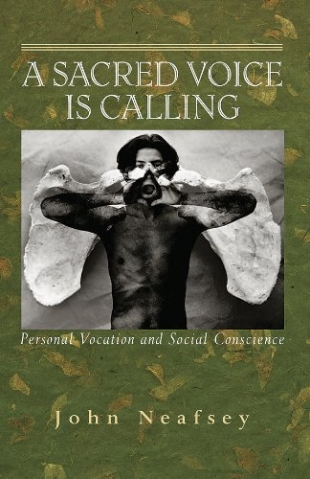"Among the Native American cultures of the great plains of the western United States, it was common for members of the community to undertake a strenuous ritual known as the vision quest in an effort to seek a guiding vision or dream for their lives. This ritual was practiced by the indigenous peoples of North America for centuries, and is still practiced by some Native Americans today.
"Although the vision quest was usually undertaken by boys and men, visions were also sought by girls and women. The vision-seeker would approach the shaman, a wise and holy member of the community experienced in such matters, to discuss his or her particular need or purpose for seeking a vision, and for assistance with the ritual process of carrying out the quest. It was important to select an appropriate place, usually a rugged, remote, lonely hilltop or butte away from the distractions of community life, to seek and wait and pray for the vision. A sweat lodge ceremony was undertaken for purposes of spiritual purification and preparation prior to going off alone to the vision-questing place, where the seeker would remain alone to fast and pray, usually for at least one full day and night, sometimes for as long as two, three, or even four days and nights. After the quest, the seeker reviewed the entire experience with the shaman so as not to miss any of its meanings or implications for his or her life.
"During the vision quest, the seeker was instructed to pray earnestly and humbly for guidance and direction from Wakan Tanka (the Lakota Sioux name for God, which translates into English as the 'Great Mystery' or 'Great Mysteriousness'). The seeker was urged to pay careful, scrupulous attention to everything that he or she experienced during the vision quest so as not to miss any possible messages or help that might be forthcoming from God. Messages might come through external events in the natural world as well as through the inner world of personal consciousness. For example, the attentive and alert vision-seeker might discern important meanings in the appearances of particular animals or birds, or in changes in the weather. Messages might also come in the form of spiritual insights, through the imagery of actual visions while the seeker was awake, or in the form of dreams during sleep.
"In the Lakota language, the word for the vision quest ritual is hamblecheya, which translates into English as 'crying for a vision' or 'lamenting for a dream.' The 'crying' or 'lamenting' suggests that visions do not come easily. The vision must be earned by a humble person with a sincere heart through the ordeal of fasting and suffering. The seeker must recognize his or her need for help and direction and guidance from a power beyond the self."
